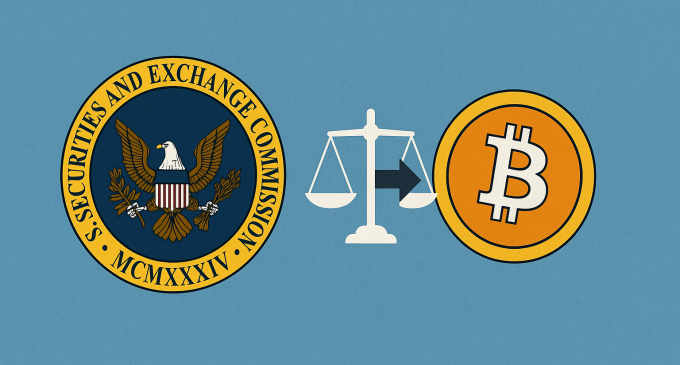
Introduction
The cryptocurrency market in the United States is standing on the edge of a regulatory transformation. In a landmark move, newly appointed SEC Chair Paul Atkins has publicly committed to overhauling the broker-dealer rules that govern the operation of crypto exchanges, custodians, and digital asset platforms. This initiative signals not only a major departure from the enforcement-heavy approach of the past but also sets the stage for regulatory modernization that could redefine how crypto markets operate within the U.S. financial system.
This reform effort comes at a crucial moment. As blockchain technology continues to reshape the global financial landscape, regulatory clarity has become one of the most demanded elements by institutional investors, retail traders, and technology innovators alike. The current fragmented legal environment has stifled innovation, discouraged compliance, and created legal ambiguity that regulators like the SEC now seek to address head-on.
The Legacy Of Ambiguity In Crypto Regulation
For years, the crypto industry has operated under a patchwork of state-level regulations and ambiguous federal guidance. The SEC, under previous leadership, was often criticized for using enforcement actions rather than forward-facing rulemaking to manage the evolving market. Firms like Coinbase, Binance US, and Kraken have all found themselves at odds with regulators over what constitutes a security, how exchanges should register, and what rules apply to new forms of digital asset custody and trading.
Broker-dealer status has been a particular area of contention. Under existing securities laws, broker-dealers are subject to strict requirements that were never designed with blockchain assets in mind. These rules cover everything from capital adequacy to custody procedures and are meant for traditional equity and bond markets. Applying them directly to crypto firms has led to confusion and legal risks.
Paul Atkins’ Modernization Agenda
Chairman Paul Atkins is determined to move beyond this outdated regulatory infrastructure. In a statement issued on May 12, 2025, Atkins confirmed that the SEC is considering a full-scale modernization of broker-dealer rules that would accommodate the unique characteristics of digital assets. He emphasized the need for a more agile, tech-forward approach that reflects the realities of today’s markets.
Atkins’ proposed reforms aim to do more than just tweak existing statutes. The SEC is expected to develop a parallel regulatory path for crypto-native firms, which may include tiered licensing based on risk profiles, dynamic capital requirements tied to trading volume and token liquidity, and a tech-based approach to compliance monitoring. These elements are intended to lower the barrier to entry for new firms while maintaining a strong foundation for investor protection.
Crucially, Atkins has suggested the SEC could work more closely with industry stakeholders to shape these new rules. This marks a dramatic shift from the past, where many in the industry felt blindsided by enforcement actions or left out of the regulatory conversation altogether.
Key Features Of The Proposed Reform
Though the final structure of the overhaul remains under discussion, early indicators point to several major components that will likely be included in the new regulatory framework:
1. Redefining Custodial Standards for Digital Assets
Current SEC custody rules do not account for the technical nature of private key management, on-chain settlement, or multi-signature protocols. Under the new guidelines, the SEC may establish digital asset custody standards that recognize blockchain-native security practices. This includes defining what constitutes “possession or control” of crypto assets and allowing for third-party custodianship models unique to decentralized finance (DeFi).
2. New Categories of Broker-Dealer Licensing
The proposed rule change could create a new classification system for broker-dealers, separating traditional market actors from digital asset intermediaries. This system may allow crypto exchanges and wallets to register under a streamlined set of obligations specifically tailored to digital asset risks. This would not only provide legal clarity but also foster competition among compliant service providers.
3. Enhanced Disclosure and Transparency Protocols
Investor protection remains a top priority. The SEC is expected to introduce enhanced disclosure standards for crypto trading platforms, including risk profiles of listed assets, algorithmic trading practices, and token listing procedures. These disclosures will likely be made publicly available and subject to periodic audits to ensure compliance.
4. Smart Contract Compliance and Automation
One of the most forward-thinking elements of Atkins’ proposal is the potential integration of smart contract auditing into compliance procedures. This could include SEC-approved standards for contract verification, on-chain transaction reporting, and automated compliance triggers. By recognizing the utility of programmable financial logic, the SEC could leverage technology to reduce regulatory overhead and increase market integrity.
Industry Reactions And Market Sentiment
The crypto industry has responded to the SEC’s announcement with cautious optimism. Executives from major exchanges and custodial services have praised the initiative as long overdue. Coinbase CEO Brian Armstrong tweeted that “a regulatory path forward is essential for innovation in the U.S.”, while Galaxy Digital’s Mike Novogratz called the move “the most constructive sign from the SEC in years.”
However, some stakeholders remain skeptical. Critics argue that the SEC’s historical resistance to innovation, including its long-standing delays in approving crypto ETFs and its combative stance in litigation, may undermine confidence in this latest initiative. Others worry that without coordination with other federal agencies like the CFTC and the Treasury, the new rules could further complicate the legal landscape.
International market observers are also watching closely. Jurisdictions like the UK, UAE, and Singapore have already developed bespoke crypto regulatory frameworks, and the U.S. risks falling behind if it fails to move decisively. Atkins’ proposal, therefore, is not just a domestic matter—it could determine America’s global competitiveness in the next era of digital finance.
Challenges Ahead For Implementation
While the intent behind the overhaul is widely supported, the road to implementation will be complex. SEC rulemaking involves public comment periods, legal drafting, and rigorous economic impact assessments. Moreover, any regulatory shift is likely to face legal challenges, particularly if it’s perceived to create uneven standards or fails to address key issues like token classification.
The SEC will also need to contend with staffing and technological gaps. Enforcing smart contract compliance or auditing blockchain transactions requires a level of technical expertise that many regulators currently lack. Building this capacity may take years and require close collaboration with private sector experts.
Congressional support is another wildcard. While some lawmakers have called for clearer crypto regulations, partisan divides remain on how far the federal government should go in legitimizing digital assets. If Congress pushes for a separate regulatory body for digital assets—an idea floated in several bills—the SEC may face political obstacles that slow or redirect its reform agenda.
Implications For The Future Of Crypto In The U.S.
If successful, the SEC’s broker-dealer overhaul could fundamentally change the U.S. crypto ecosystem. Legal clarity would open the door for new institutional entrants, reduce compliance costs, and foster innovation in areas like decentralized exchanges, tokenized securities, and digital asset lending. It could also reduce the appeal of offshore jurisdictions and bring more activity within the regulatory perimeter.
More broadly, this shift could serve as a template for broader financial modernization. The principles of modular compliance, digital identity, and real-time risk monitoring being explored in crypto markets may eventually influence how traditional markets are regulated.
Conclusion
Paul Atkins’ push to modernize broker-dealer regulations for the crypto market marks the beginning of a new chapter in U.S. financial oversight. While challenges remain, the SEC’s willingness to adapt and evolve signals a significant departure from the past. By recognizing the unique nature of digital assets and engaging directly with market participants, the SEC has the opportunity to create a regulatory framework that balances innovation with protection.
The coming months will be critical. Industry participants, policymakers, and regulators will need to work together to ensure that the final rules promote market growth, protect consumers, and maintain U.S. leadership in the rapidly evolving world of blockchain finance.







There are no comments at the moment, do you want to add one?
Write a comment